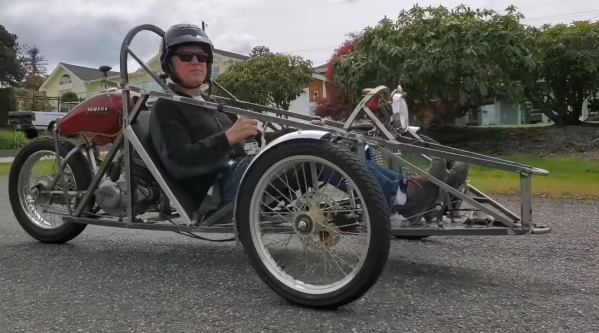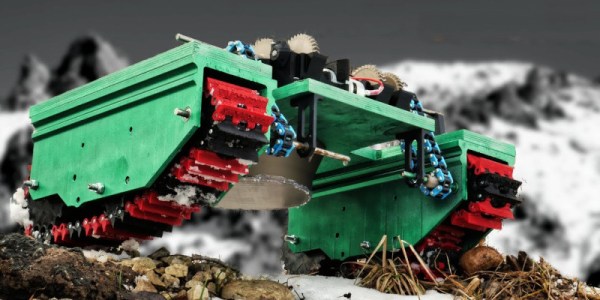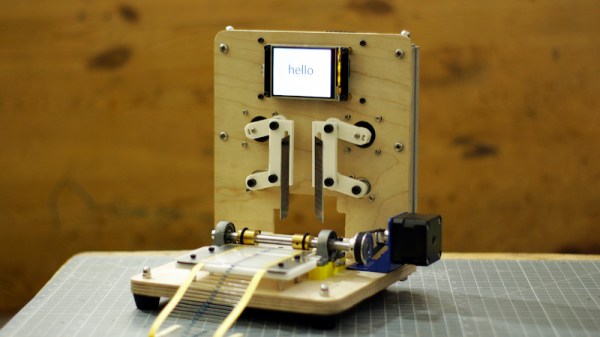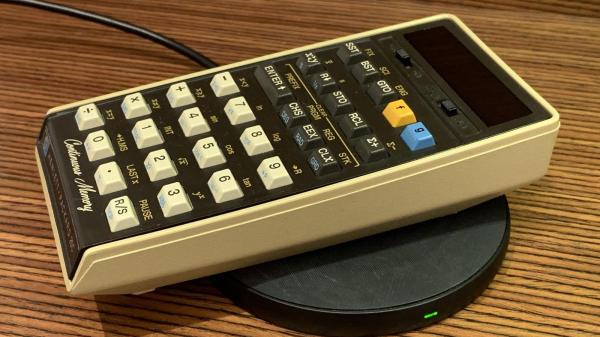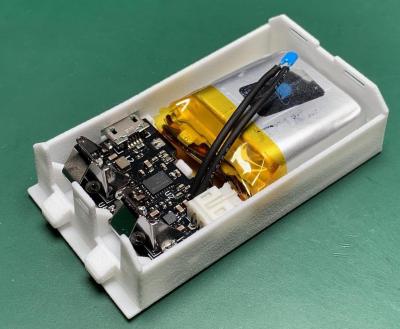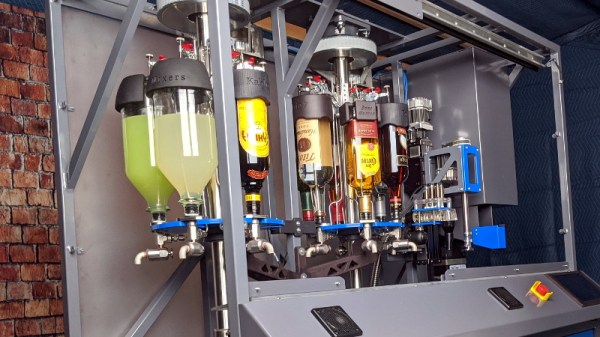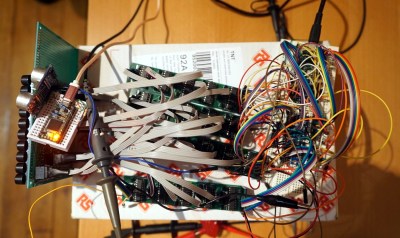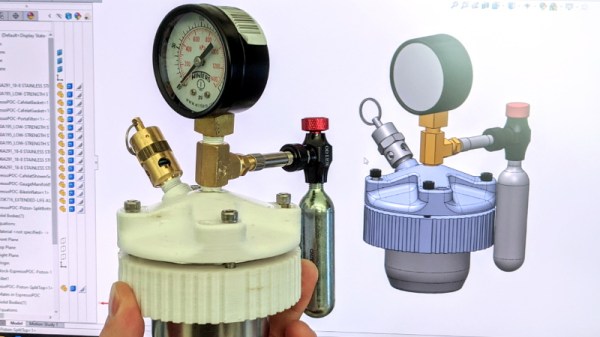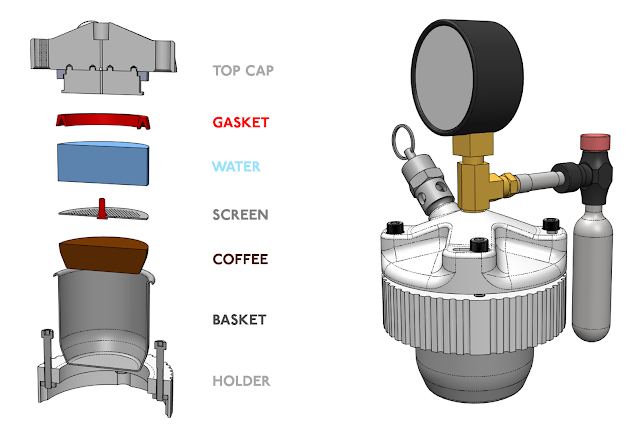While the bicycling community is welcoming an influx of electric bikes, there’s a group of tuners on the fringes that are still intent on strapping gas motors of all sizes to bicycles and buzzing down the roads in a loud and raucous fashion. Kits are readily available and are much cheaper than comparable e-bike kits, and with a little bit of work it’s possible to squeeze a lot of excitement from these small motors. With a lot of work, though, you might end up with something like this incredibly fuel efficient and fully customized reverse trike from [Paul Elkins].
The entire goal with this build was fuel efficiency, so the plan is to eventually enclose the vehicle in aerodynamic fairings, most likely using his favorite material, Coroplast. The frame itself is completely hand-made from square tube and welded by [Paul] himself to his own custom specifications. He bolts on a suspension and custom steering rack with levers to control the two front wheels, and the small engine and gas tank are attached to the back above the single drive wheel. The engine hadn’t been started in ten years, but once he got it all put together, it started right up and he was able to take his latest prototype out on the road for a test drive.
While the build isn’t completely finished, the video below (eleventh so far in the build log) is far enough along to show the fruits of years of [Paul]’s labor. It’s taken a while to get a design that worked like he wanted, but with this iteration, he finally has what he was looking for.
Continue reading “Scratch Built Tricycle Maximizes Fuel Efficiency”

